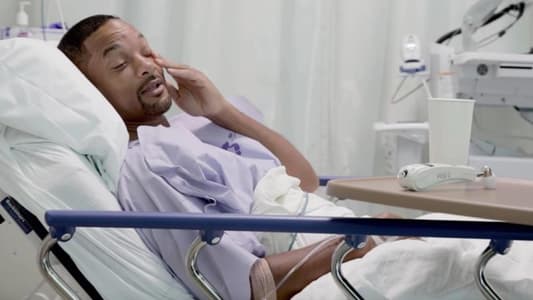The U.S. Preventative Services Task Force recommends getting screened for colon cancer once you hit age 50, so Will Smith decided he would get his first colonoscopy at age 51-and he captured the whole thing on video. “I’m going in to get my health right,” Smith said in a YouTube video titled “I Vlogged My Colonoscopy.”
Of course, the father-of-two approached the entire process with his signature sense of humor: “I’m 50, so people need to look up my stuff.”
In the video, Smith joked around in his hospital gown, and whispered to the camera that his “a-is gonna be out.” You can see him being given anesthesia and wheeled away, and then again acting groggy after his procedure. “I haven’t done many drugs in my life, so, this stuff works on me really well,” he joked. “I feel like I have to poop. Do I have to poop? Or was there a camera up my a- that’s giving me the sensation?”
After his recovery, Smith said that “everything feels normal,” noting that “there’s a certain amount of commitment and embarrassment involved with being healthy. You just gotta do it, man.”
Smith also shared that his doctor found a polyp-a clump of cells that develops along the colon lining-during his colonoscopy. The polyp was removed and sent for testing, which found it was a tubular adenoma containing precancerous tissues.
Smith’s doctor explained that 95 percent of colon cancers develop from that kind of polyp, so finding it early was crucial. The doctor also urged Smith to get another colonoscopy in two to three years, instead of the recommended 10.
- How does a colonoscopy work, exactly?
A colonoscopy is one of several tests done to screen for colon cancer. During a colonoscopy, you’ll be put under and your doctor will use a long, thin, flexible, lighted tube to check for polyps or cancer inside your rectum and entire colon, the Centers for Disease Control and Prevention (CDC) says. During the test, your doctor can find and remove most polyps and some cancers.
- So, why is finding a polyp a big deal?
A polyp is a growth made up of a clump of cells on the surface of the large intestine, says Darrell Gray, M.D., M.P.H., deputy director at the Center for Cancer Health Equity at The Ohio State University Comprehensive Cancer Center-The James Cancer Hospital.
“Not all polyps are precancerous,” he says, but the precancerous type is typically known as an adenoma and it’s the most common type of polyp.
If a polyp is precancerous, though, and it’s not detected and removed, it can grow and evolve into cancer, Dr. Gray says.
- What happens if your doctor finds a precancerous polyp?
Doctors don’t know for sure by looking at a polyp if it’s precancerous or cancerous, so it’s sent to a lab for testing, says Rudolph Bedford, M.D., a gastroenterologist at Providence Saint John’s Health Center in Santa Monica, Calif.
If it comes back as precancerous, your doctor will recommend that you be on a surveillance program. “This means that, depending on the size and number of polyps, your next colonoscopy will likely need to be in three or five years according to evidence-based guidelines,” Dr. Gray says. But, of course, there are variations within that.
If you happen to have a polyp that’s not cancerous, you’ll just need to be screened again in 10 years like everyone else, Dr. Bedford says. (And if you’re younger than 50, knowing how to spot the signs of colon cancer is still important.)
Smith wrapped up his video by thanking his doctor for urging him to get screened. “You know, when I decided I wanted to shoot this as a vlog, it was much more, ‘Hey, this will be cool. This will be fun,’” he said. “I didn’t realize that there would be a precancerous polyp that would get found out of it.”






TWEET YOUR COMMENT